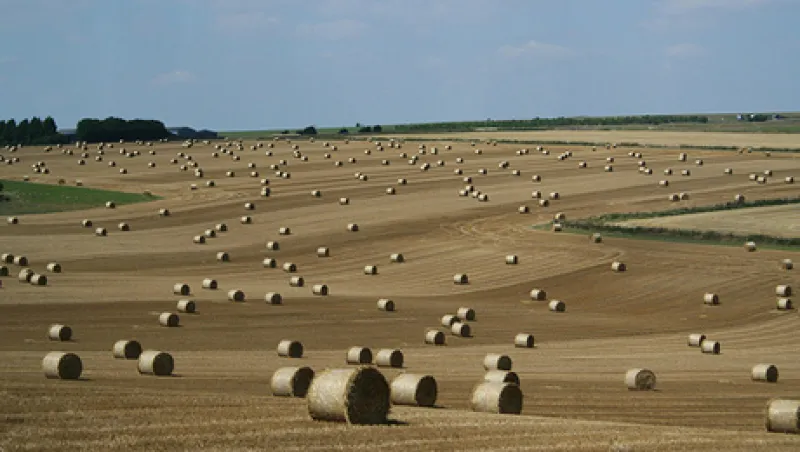Last week, TIAA-CREF formally launched a $2 billion agriculture investment company, TIAA-CREF Global Agriculture LLC, with AP2, BCIMC and CDPQ all signing on as co-investors. This is a big deal, so let me break it down for you:
A pension fund (!) has seeded (!) a new company (i.e., not a fund!) that will invest its own assets as well as those of peers (!) in actual farms (!) in the developed and developing world!
Gone are the days when a pension fund interested in agriculture might allocate money to an asset manager that would trade soybean futures contracts in Chicago! I think this vehicle is evidence of a new era of institutional investment. And I’m happy to explain why:
Seeds: TIAA-CREF has, in effect, seeded a new agriculture company (AGCO) that will invest in cotton, soybeans, apples and almonds in the US, Australia and Brazil. Why seed a new vehicle? Institutional investors are trying to maximize alignment of interests, extend the time horizon of strategies, focus on real assets, and, where nothing exists in the marketplace to offer such things, launch bespoke vehicles that can get them there. This trend is growing more common.
Structure: The vehicle used by TIAA-CREF in this case is a company (i.e., LLC) instead of the more traditional fund partnership (i.e., GP-LP). Why is that important? Because the LLC offers investors a vehicle that can be ‘evergreen’. And in a long-term, illiquid asset class like farmland, this is crucial. The investors in the company won’t be obliged to sell the assets. Here’s how Jose Minaya, Managing Director of Natural Resources and Infrastructure Investments for TIAA-CREF, thinks about farmland: “We take a long-term investment horizon; every asset we buy in our farmland portfolio is with a 20 to 30-year view.”
Peers: TIAA-CREF is managing assets on behalf of other pension funds? Actually, yes. AP2, BCIMC and CDPQ have all signed on as co-investors in the vehicle. Why? If you were an institutional investor looking to get access to farmland, co-investing alongside TIAA-CREF might sound like a pretty compelling value proposition (especially when compared with the alternative of building your own in-house capabilities). Here are some telling comments from the co-investors:
According to Anders Stromblad, head of external managers, AP2:
“TIAA-CREF offers investors access to this important, emerging asset class through a sustainable, transparent platform. Importantly, TIAA-CREF’s interests are aligned with ours.”
According to Normand Provost, Executive Vice-President, Private Equity at the Caisse:
“The group of investors, which includes the Caisse, shares the same long-term vision and the platform of the partners, with TIAA-CREF, aims to be sustainable, accountable and collaborative. By joining forces with TIAA-CREF, we can count on a quality partner with whom our interests are fully aligned.”
Concretization: A pension fund investing in farms? Yes. And with good reason! Farmland is finite, and it is required to sustain life. So it has an underlying value that should be relatively steady. And that means it can offer long-term investors a consistent stream of investment returns. In fact, over the past four decades, US agriculture has outperformed stock and bond markets. The growing world population, changing diets and shrinking supply of arable land has made farmland a scarce resource.
But most institutional investors tend to avoid agriculture and farmland. Why? Because getting access to the benefits above requires being a direct investor. And that’s very hard. Consider the skill set of being a savvy farmland investor, and you decide if the average ‘financial investor’ can do this:
“In every acquisition, our agricultural investment team considers farm-specific investment criteria. These factors take into account regional and micro-climate factors, including weather variability and soil types; the strength of local infrastructure and tenant markets; water availability and sustainability; crop returns; environmental and social impacts; the potential for future operational growth; and capital gains. Our investment decision-making is also based on crop type. Row crops generally exhibit stable income and capital return, while permanent crops offer higher income, but also higher risk. As a result, we focus on row-crop farmland and make select, opportunistic investments in permanent-crop farmland. To ensure sustainability, we place a strong emphasis on environmental stewardship and seek investments in line with this philosophy... Access to water and rainfall is one of the most important factors that the organization’s analysts consider before acquiring farmland. Especially in Australia, where the country goes from periods of drought to severe rainfall, water rights are significant to the agriculture portfolio. The property’s ability to capture and store water is also vital to its productivity.”
Instead of thinking in terms of abstract financial products and concepts, this fund is talking about concrete farming products that will generate returns and create economic and social value. There are no financial abstractions here – this is the real stuff. And I think that’s a useful way for long-term investors to approach investments of all kinds. For too long investors have spent more time talking about diversification and financial products instead of actually spending time understanding the underlying assets and their operation.
Anyway, all this is to say that this new vehicle offers much in the way of innovation. And that’s just what finance and investment need at present!






